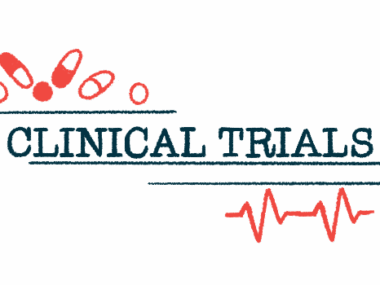Kaftrio helped fight P. aeruginosa bacteria
A real-world study from Europe also showed that Kaftrio eases inflammation
Written by |

Taking Kaftrio, a combination of elexacaftor, tezacaftor, and ivacaftor sold as Trikafta in the U.S., for up to 24 weeks can make signs of inflammation go down in people with cystic fibrosis (CF), and help get rid of Pseudomonas aeruginosa bacteria.
That’s according to data from a real-world study (NCT05576324) in Germany that evaluated how well Kaftrio worked for people with CF, ages 12 and older, many of whom had lung infections caused by the P. aeruginosa bacteria.
The study, “Elexacaftor – Tezacaftor – Ivacaftor treatment improves systemic infection parameters and Pseudomonas aeruginosa colonization rate in patients with cystic fibrosis a monocentric observational study,” was published in the journal Heliyon.
CF causes the body to produce thick, sticky mucus that can clog the airways in the lungs, leading to inflammation and damage over time. Symptoms of CF can vary, but most often include coughing, wheezing, difficulty breathing, and frequent lung infections.
P. aeruginosa bacteria are a key agent in CF lung disease. Infections that come back after a period of improvement (recurrent) or have been lasting for a long time (chronic) can be a major driver of inflammation and damage in CF.
In the European Union, Vertex Pharmaceuticals’ Kaftrio is a medication currently used to treat people with CF, ages 6 and older, who have at least one F508del mutation in the CFTR gene, the most common cause of CF.
The medication can improve lung function and reduce the levels of sweat chloride. It also can reduce the number of P. aeruginosa and other bacteria in the lungs of people with CF.
Research from Germany
To find out how well the medication works in a real-world setting, a team of researchers in Germany looked at data from 69 people with CF, ages 12–56 years, who were treated with Kaftrio for 24 weeks from September 2020 to November 2021.
The researchers collected data before and after the treatment to see if it made any difference in the number of white blood cells circulating in the bloodstream, a measure of inflammation.
After treatment, the number of white blood cells dropped from 8,900 to 6,400 per microliter of blood. The levels of antibodies of the IgG, IgA, and IgM classes, which are produced by the immune system to help protect the body against infections, also dropped.
At entry to the study, 33 (48%) participants had lung infections with P. aeruginosa bacteria. These were defined as having at least one positive test for the bacteria in samples of sputum (also called phlegm) or deep throat swabs within one year.
More than half (57%) had tested positive for the bacteria prior to starting the treatment. One year after treatment, more than one-third (36%) were negative for the presence of P. aeruginosa bacteria.
View some results cautiously
The researchers also calculated that those who received treatment with Kaftrio had 8.8 times the odds of getting rid of the bacteria or keeping testing negative for them. However, the findings “have to be interpreted with caution as results derived from sputum and to a smaller amount also from deep throat swab samples,” the team noted.
Treatment with Kaftrio also improved forced expiratory volume in 1 second (FEV1), a measure of lung function, and reduced the levels of sweat chloride, as seen previously in clinical trials. Almost one-quarter (22%) of the participants experienced persistently increased levels of liver enzymes, a known side effect of the medication.







